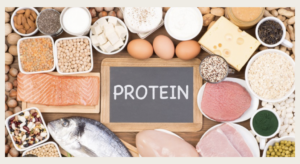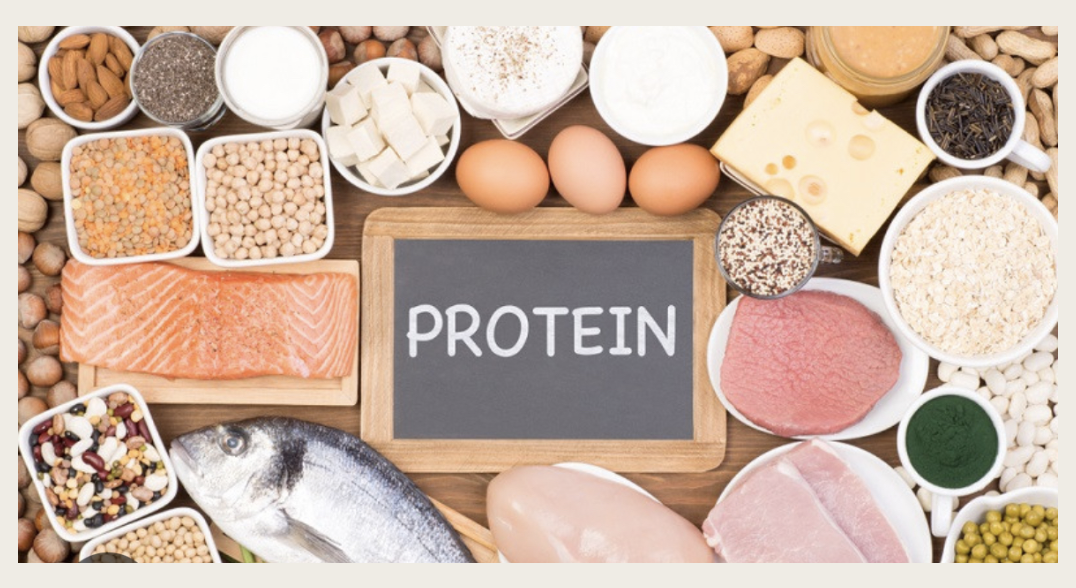I think by now, if you have any kind of social media account, you have come across the importance of protein consumption. It’s been a thing. Measured protein intake is no longer just a concern for bodybuilders and gym goers, it is relevant for everyone. Here are some of the most googled topics that have been searched on the web in 2024 pertaining to protein:
– Optimal protein amount for muscle building and weight loss
– High-protein diets for weight management
– Benefits of protein for overall health
– Quality and types of protein
– High-protein diet safety
I learned about the power of protein about 6 years ago when I decided to compete in my first bodybuilding show. At the time, I was in my 7th year of Crossfitting, both as an athlete and also as a coach. I truly loved everything about the sport of Crossfit, from the community, the competition, to the new world of fitness it had introduced me to. But at the 7th year mark, I had an itch to try something completely foreign to my current situation. Although I had gained an immeasurable amount of strength, confidence, skill and ability through Crossfit, I wanted to see how far I could naturally take my body to reach the aesthetic I desired. I wanted a new challenge. Folks, I wanted abs. I know that sounds so vain, but coming from a once slightly chubby teenager, I just wanted to see if it was possible.

Back to protein. What I did not know back then was that my coach had me at 155 -160 grams of protein per day when I started my show prep. Considering I was only 125 lbs when I started, that was well above the common recommendation of 0.8-1 gram of protein per pound of (ideal) body weight. If you do the math, that is about 1.2-1.3 grams of protein per body weight. Let’s talk about what that protein did for me at the time, and what it can do for you.
Insert second most googled protein topic of 2024: “High-protein diets for weight management” –
Protein is a macronutrient, as are fats and carbohydrates. To keep things simple, every gram of protein you eat contributes 4 calories to your caloric intake. What differentiates protein from the other two macronutrients is that protein has the highest TEF (thermic effect of food). Thermic effect of food refers to the amount of energy your body expends to digest, absorb and process the nutrients from the foods you eat. This high thermic effect of protein contributes to its benefits for weight management, as it not only helps build and repair muscles but also increases calorie expenditure, making it easier to create a calorie deficit for fat loss. If you want to compare percentages, on average about 20-30% of the calories from protein are used for digestion and metabolism. If you compare that to carbohydrates (5-10%) and fats (0-3%) you can now begin to understand why my coach had me eating Arnold Schwarzenegger amounts of protein back then. What does that mean for you? It means that eating the 0.8- 1 gram of protein per ideal body weight can not only contribute to feelings of satiety during meals (protein is also the most satiating macro), but also helps in your fat loss goals.
Time to break this down. Let’s say you are a 150 pound female and your goal is to lose about 10 pounds. Your “ideal” weight would then be140 lbs. That sounds reasonable, especially over several weeks (10-12 weeks).
Let’s do some protein math:
140 x 0.8 = 112 grams of protein per day (on the lower end)
140 x 1 = 140 grams of protein per day (on the higher end)
My recommendation is to find the sweet spot between the lower and higher end of the protein range you have just calculated for yourself. If you decide to find the halfway point between your two numbers, just add them both together and divide by 2.
(112 + 140) ÷ 2 = 126.
You can aim for 126 grams of protein per day to start your journey. The next step is how to incorporate that throughout the day.
I think it is best to first decide how many meals you eat per day, and yes snacks count! For example, I might say I’d like to spread that protein between 4 meals per day.
What I then would do is take 126 and divide it by 4.
126 ÷ 4 = 31.5 grams of protein per meal.
That would mean your breakfast, lunch and dinner should all have a minimum of 31 grams of protein in them. That fourth meal per day (if you like) can also have 31 grams of protein in it, or you can split it into two smaller snacks each with about 15 grams of protein per snack. That is generally how I find it works better for most of my clients.

I’ve included a list of protein sources and amounts for your convenience. Hopefully this has been helpful, no matter what goals you have for yourself.
Options that are ~ 30 grams of protein:
1. Chicken breast (grilled) – 4 oz (113 g)
2. Chicken thighs (without bone, cooked) – 5.3 oz (150 g)
3. Ground turkey (cooked) – 5 oz (142 g)
4. 85% lean ground beef (cooked) – 4.6 oz (130 g)
5. Steak (lean cut, cooked) – 4.4 oz (125 g)
6. Eggs and egg whites combo – 2 large eggs + ½ cup liquid egg whites
7. Salmon (cooked) – 5 oz (142 g)
8. White fish (e.g., cod, tilapia, haddock) – 6 oz (170 g)
9. Canned tuna (in water) – 5 oz (142 g)
10. Whey isolate protein powder – 1 scoop (typically 30-35 g depending on brand)
11. Plain Greek yogurt (nonfat) – 1.25 cups (280 g)
12. Cottage cheese (low-fat) – 1.3 cups (300 g)
Options for snacks that are ~ 15 grams of protein:
1. Edamame (cooked) – 1 cup (155 g)
2. Hard-boiled eggs – 2 large eggs
3. Low-fat string cheese – 2 sticks
4. Smoked salmon – 3 oz (85 g)
5. Beef jerky – 2 oz (56 g)
6. Deli turkey – 3 oz (85 g)
7. Cottage cheese (low-fat) – ¾ cup (170 g)
8. Plain Greek yogurt (nonfat) – ¾ cup (170 g)
Your Health & Wellness Fix,
Carole J. Carus
Click here to visit my Beacons page! You can subscribe to my weekly newsletter there. All good things coming your way!

